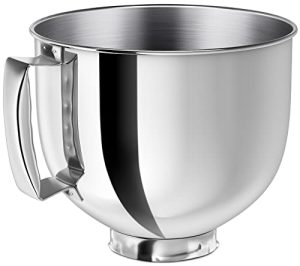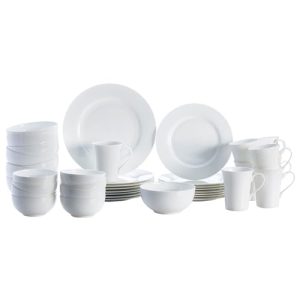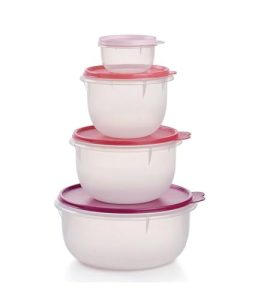Are you a coffee lover who can’t start the day without a steaming cup of brew? If so, you’re not alone.
Coffee makers have become a staple in many kitchens, making it easier than ever to enjoy a fresh cup of coffee at home. But as you savor that comforting aroma, have you ever wondered, “Are coffee makers safe? ” It’s a question that might have crossed your mind, especially with the array of news about health and safety concerns in household appliances.
Imagine the peace of mind you’d have knowing that every sip from your morning cup is both satisfying and safe. This article is here to put your worries to rest. We’ll dive into the safety features of modern coffee makers, the potential risks you might not be aware of, and how to choose the right appliance that keeps your health and safety in check. Stay with us, and by the end of this read, you’ll be equipped with the knowledge to enjoy your coffee with complete confidence.
Materials In Coffee Makers
Understanding the materials used in coffee makers is crucial. Different materials affect the taste and safety of your coffee. Let’s explore the common materials and their impact.
Plastic Components
Many coffee makers have plastic parts. These parts are lightweight and affordable. Concerns arise about chemicals in plastic. Some plastics contain BPA, a harmful chemical. Look for BPA-free labels to ensure safety.
Metal And Stainless Steel
Metal is another common material. Stainless steel is preferred for its durability. It resists rust and corrosion. Metal parts provide better heat retention. This leads to improved coffee flavor.
Glass And Ceramic Options
Glass and ceramic are popular for their aesthetic appeal. They do not alter the taste of coffee. These materials are easy to clean. Glass is fragile and needs careful handling. Ceramic offers a smooth surface and elegant look.

Credit: www.amazon.com
Potential Health Risks
Coffee makers are a staple in many households. But are they safe? While most coffee makers are designed for safety, potential health risks exist. These risks can arise from the materials used and how the machines are maintained. Understanding these risks can help ensure a healthier coffee experience.
Chemical Leaching
Coffee makers often contain plastic components. Some plastics can leach chemicals into the coffee. High temperatures can increase this leaching. Chemical leaching might affect the taste and quality of your coffee. More importantly, it might pose health risks. Choosing coffee makers with minimal plastic parts can help reduce leaching.
Bpa And Bps Concerns
BPA and BPS are chemicals found in some plastics. They can mimic hormones and disrupt the body’s balance. Many coffee makers use BPA-free plastics. But some replace BPA with BPS, which might be equally harmful. Checking for BPA and BPS in your coffee maker can be crucial. Opting for stainless steel or glass components is safer.
Mold And Bacteria Growth
Mold and bacteria can grow in coffee makers. Warm, moist environments are perfect for them. Regular cleaning helps prevent this growth. Coffee residue and water can harbor bacteria. Mold and bacteria can affect your health. Clean your coffee maker thoroughly and often. Use vinegar or specialized cleaning solutions for best results.
Safety Standards
Coffee makers usually meet high safety standards, making them safe for home use. Regular maintenance and following instructions ensure their safe operation. Always check for certifications and user reviews when purchasing to guarantee quality and reliability.
When you wake up to brew your morning coffee, it’s comforting to know that your coffee maker is designed with safety in mind. Safety standards ensure that your coffee maker doesn’t just make a delicious cup of coffee but does so safely. These standards are set to protect you and your family from potential hazards. Let’s dive into what makes a coffee maker safe, focusing on regulatory guidelines, testing and certifications, and manufacturer compliance.Regulatory Guidelines
Coffee makers must adhere to specific regulatory guidelines to ensure they are safe for home use. In the United States, the Consumer Product Safety Commission (CPSC) sets these guidelines, focusing on electrical safety and the prevention of fire hazards. Your coffee maker’s design must meet these standards, which cover everything from the material used to the wiring inside the machine. This means that when you purchase a coffee maker, it should be equipped with features that minimize risks, such as automatic shut-off functions. Do you ever wonder about the little details manufacturers consider to keep you safe?Testing And Certifications
Before a coffee maker reaches your kitchen countertop, it undergoes rigorous testing. Organizations like Underwriters Laboratories (UL) test these appliances to ensure they meet safety standards. These tests check the coffee maker’s ability to handle electrical surges and its resistance to overheating. Certifications from such organizations provide assurance that the product is safe for everyday use. Have you noticed those little certification marks on your appliances? They’re more than just a stamp—they’re a promise of safety.Manufacturer Compliance
Manufacturers play a crucial role in ensuring coffee makers are safe. They must comply with all safety standards and guidelines during the design and production process. This includes using quality materials and incorporating safety features like thermal cut-offs. Manufacturers often go beyond mandatory standards to win consumer trust, focusing on innovative safety measures. Your choice of a reputable brand can make a big difference in how safe your coffee experience is. As you sip your coffee, consider how manufacturers balance innovation with safety to bring you peace of mind.Maintenance And Cleaning
Proper maintenance and cleaning of coffee makers ensure safety and longevity. Regular care prevents buildup of bacteria and ensures a great-tasting brew. These practices also help in preserving the machine’s functionality. Let’s explore how to keep your coffee maker clean and safe.
Cleaning Frequency
Cleaning your coffee maker should be a routine task. Aim to clean it after every use. This prevents the buildup of coffee residue and oils. For a deeper clean, schedule a weekly cleaning session. This helps in removing any lingering bacteria or mold.
Effective Cleaning Methods
Use mild soap and warm water for daily cleaning. Wash the removable parts thoroughly. Let them dry completely before reassembly. For more thorough cleaning, use a solution of water and vinegar. Fill the reservoir with equal parts water and vinegar. Run a brewing cycle, then rinse with plain water.
Descaling And Its Importance
Descaling removes mineral deposits from your coffee maker. These deposits can affect the taste and performance. Use a descaling solution or vinegar for this process. Follow the manufacturer’s instructions carefully. Descaling should be done every three months for optimal results.
Choosing Safe Coffee Makers
Choosing a safe coffee maker is essential for your health and peace of mind. With numerous options on the market, how do you ensure that your chosen coffee maker is not only efficient but also free from harmful materials? Let’s dive into key features to look for and brands that prioritize safety and eco-friendliness.
Features To Look For
When selecting a coffee maker, prioritize models with BPA-free components. BPA is a chemical found in certain plastics, which can leach into your coffee, posing health risks.
Look for coffee makers with stainless steel or glass carafes. These materials are safer compared to plastic, which can release harmful chemicals when heated.
Consider coffee makers with a programmable timer and auto shut-off feature. These not only offer convenience but also prevent overheating, reducing safety hazards.
Avoiding Unsafe Materials
Stay away from coffee makers made with plastic parts, especially in areas that come in contact with hot water. Plastic components can degrade over time, releasing toxins.
Certain aluminum components might also be a concern. Opt for coffee makers using stainless steel heating elements instead.
Be cautious of non-stick coatings that may contain PFOA and PFOS. These chemicals can be hazardous when they start to degrade.
Eco-friendly And Safe Brands
Brands like Breville and Cuisinart often emphasize eco-friendly designs and materials. They use stainless steel and glass, ensuring a safer brewing experience.
Look for certifications like the Energy Star label. These models not only save energy but often adhere to stricter safety standards.
Consider reading reviews and seeking recommendations. Personal experiences can reveal insights into the durability and safety of coffee makers.
Ultimately, the choice of a coffee maker affects not just the quality of your brew but also your well-being. Are you prioritizing safety and eco-friendliness in your selection? Make informed decisions that align with your values and lifestyle.

Credit: www.target.com
User Practices For Safety
Coffee makers are generally safe with proper use. Regular cleaning prevents bacteria buildup. Check for any damaged parts to avoid electrical hazards.
When it comes to using coffee makers, safety should be your top priority. Many people overlook basic safety tips, yet these machines can pose risks if not used correctly. By adopting safe user practices, you can enjoy your morning coffee without worry. ###Proper Usage Techniques
Always read your coffee maker’s manual. Each model has specific instructions that you should follow for safe operation. For instance, overfilling the water reservoir can cause spillage and potential electrical hazards. Keep an eye on the power cord. Ensure it’s not frayed or damaged, as this could lead to electrical shocks. Make sure the cord is not stretched across walkways to prevent tripping. Place your coffee maker on a stable, heat-resistant surface. This prevents accidental tipping and reduces the risk of burns. It’s amazing how a small shift can lead to big accidents. ###Storage And Handling
Store your coffee maker in a dry area. Moisture can affect the machine’s internal components, leading to malfunction. When storing, ensure all parts are clean and dry. Think about the placement of the machine when not in use. Is it easily accessible but out of reach of children? This can prevent accidents and give you peace of mind. Use the original packaging for storage if possible. It provides the best protection, keeping the machine safe from dust and accidental knocks. ###Recognizing Wear And Tear
Regularly inspect your coffee maker for signs of wear and tear. Look for any cracks in the carafe or worn-out buttons. These are signs that maintenance or replacement might be needed. Check the heating element. If your coffee isn’t as hot as it used to be, it might be time for a repair. Ignoring these signs can lead to inefficient brewing and potential hazards. Consider how old your machine is. If it’s been in service for many years, parts might start to degrade. Sometimes, it’s safer and more economical to invest in a new one. Are you practicing these safety tips with your coffee maker? Making a small habit change today could save you from bigger issues tomorrow.
Credit: www.target.com
Frequently Asked Questions
How Safe Are Coffee Makers?
Coffee makers are generally safe when used correctly. Ensure you follow the manufacturer’s instructions for optimal safety. Regular cleaning prevents mold and bacteria buildup. Use proper water temperatures to avoid burns. Always unplug the machine when not in use to prevent electrical hazards.
Is It Safe To Drink Coffee From A Coffee Machine?
Yes, it’s safe to drink coffee from a well-maintained machine. Regular cleaning prevents bacteria and mold buildup. Use quality water and follow the manufacturer’s instructions for best results. Always ensure the machine is in good working condition to enjoy a safe coffee experience.
Do Coffee Makers Leach Plastic Into Coffee?
Some coffee makers may leach plastic into coffee, especially if made with low-quality materials. Choosing BPA-free models minimizes risk. Regular maintenance and using stainless steel or glass options can further reduce exposure.
What Is The Least Toxic Way To Brew Coffee?
Use a glass or stainless steel French press. Avoid plastic coffee makers and paper filters. Choose organic coffee beans, free from pesticides. Clean brewing equipment regularly to prevent residue buildup. Use filtered water to reduce contaminants. Minimize brewing time to reduce acidity and potential toxins in your coffee.
Conclusion
Coffee makers can be safe with proper care. Regular cleaning prevents bacteria growth. Avoiding cheap models reduces electrical risks. Consider materials used in your machine. Choose brands with safety certifications. Follow instructions for safe operation. Watch for recalls or safety alerts.
Monitor the condition of your coffee maker regularly. Replace worn-out parts promptly. Choose wisely and enjoy your coffee safely. Your health matters, so make informed choices. A little caution goes a long way. With these tips, you can brew coffee with confidence.
Stay safe and enjoy your favorite cup every day.



